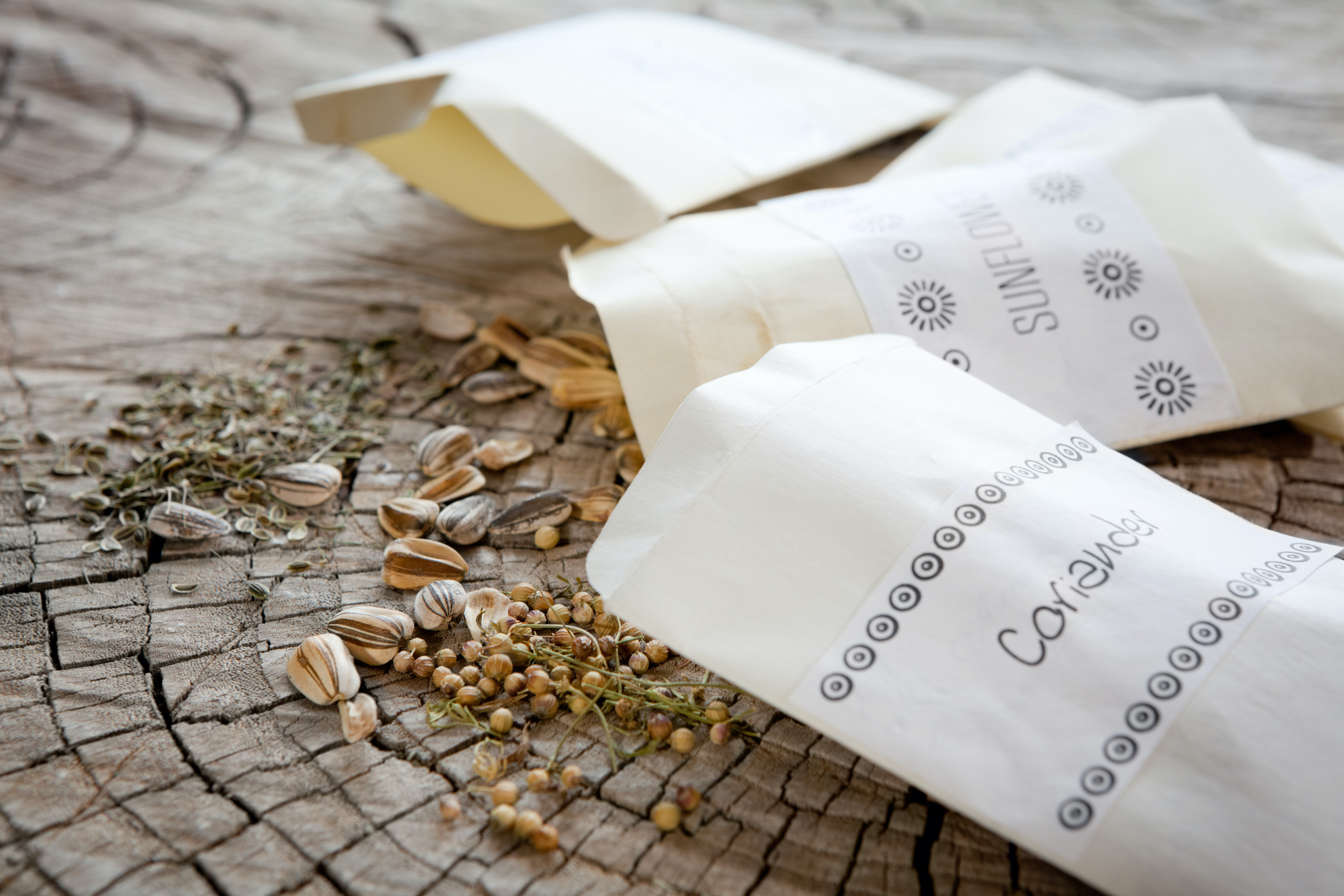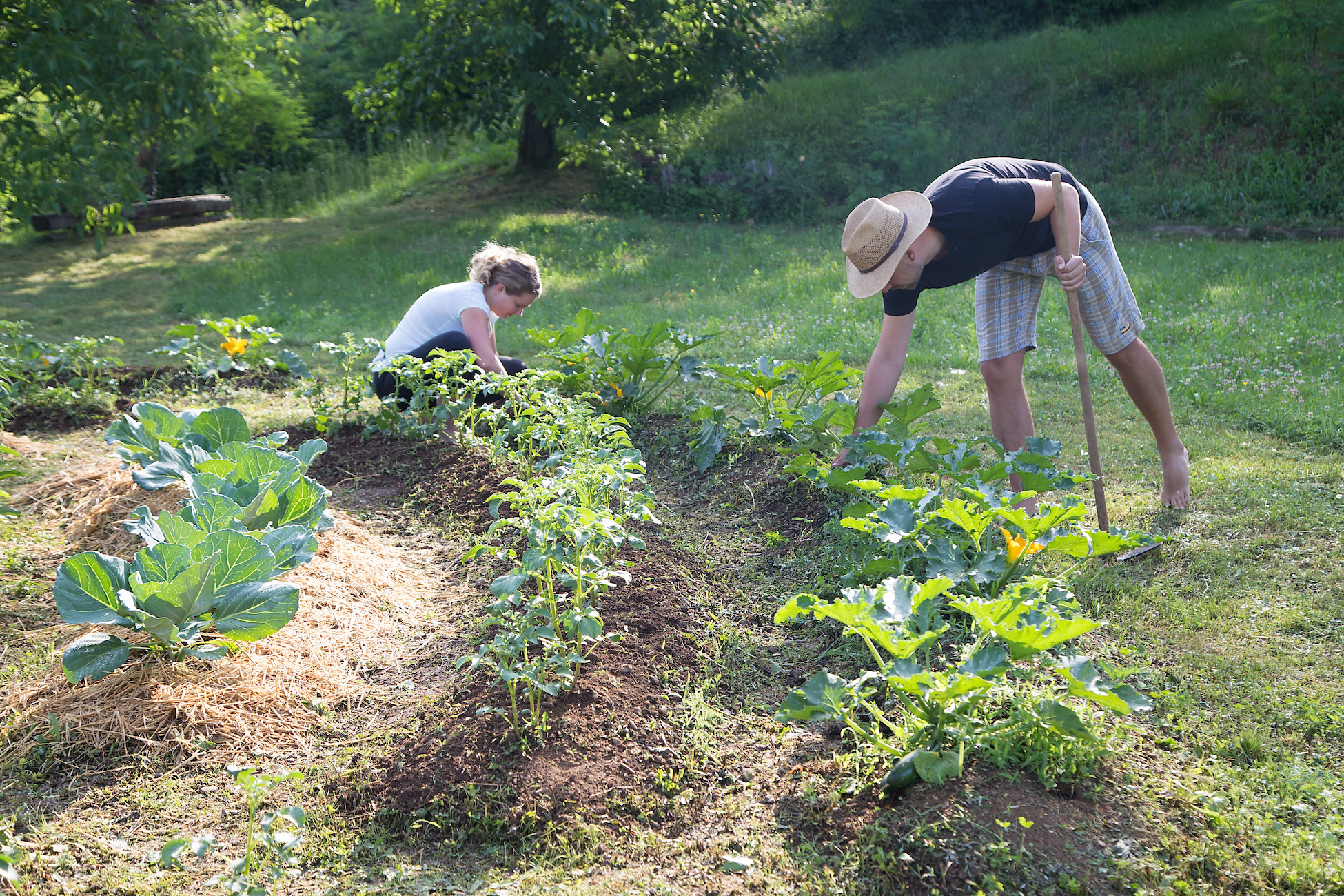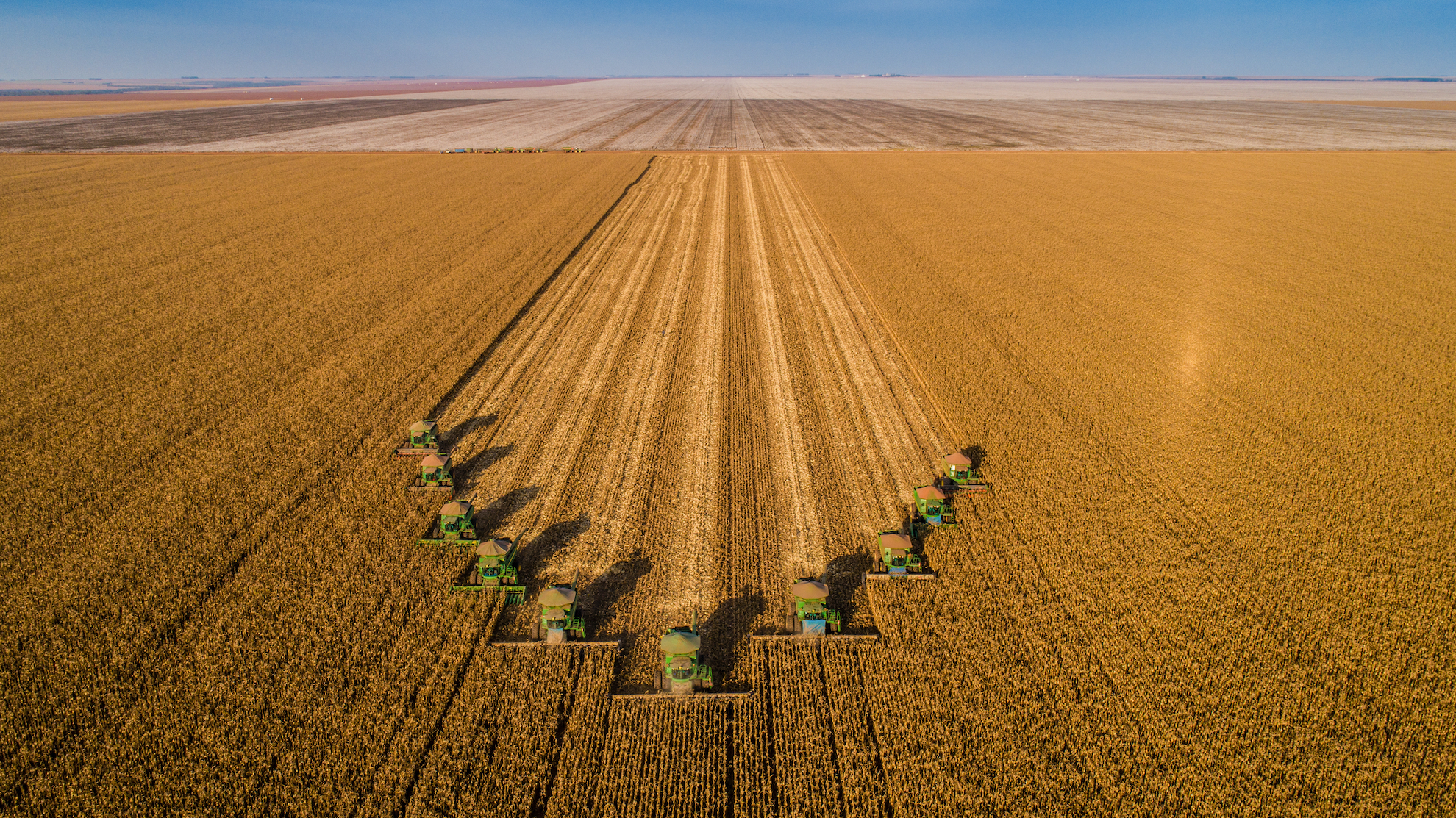As national governments and international institutions came together in the 1970s to create an infrastructure for conserving crop diversity, individual gardeners and community members also participated in conservation efforts. They wanted to ensure that diverse varieties, for example, of popular garden vegetables or other fruits and foods that people were familiar with would be available for future generations. Seed saving has developed into a movement all its own, a collective of people either gathered as particular communities or as enthusiasts for specific crops. These have organised in different places at different moments in time, as a real groundswell or grassroots approach to conserving diversity. This movement offers a lot of lessons for thinking about alternative possibilities for moving away from an idea of inevitable erosion towards one of diversity in motion: with seeds changing, transforming, being exchanged and developed and expanding into the future.
Seed savers and gardeners
Melvin Kranzberg Professor in the History of Technology
- Conserving crop genetic diversity was not confined to institutional seed or gene banks; individuals began organising initiatives of their own, eventually starting a grassroots conservation movement.
- Kent and Diane Whealy began an organisation called the Seed Savers Exchange, which sought to save crop varieties, build community and preserve seed saving practices.
- It’s important to think about how we conserve and use our plant resources because crop and cultural diversity are intimately connected.
The seed-saving movement

Photo by Mona Makela
Seed Savers Exchange
Two individuals who were particularly influential in catalysing the seed saving movement in the United States were a couple, Kent and Diane Whealy. They founded an organisation called Seed Savers Exchange, which took shape in the 1970s, later expanding in the 80s and afterwards. It was based on the idea of connecting people who were cultivating seeds that they saved themselves, that either had a particular meaning within their family – bean varieties that had been enjoyed by a grandfather, for example – or that they had discovered through a friend and had started cultivating themselves. The Whealys understood that most people no longer did this kind of seed saving. It was a practice that was dying out, as older gardeners passed on. The Whealys wanted to reclaim seed saving as something that every gardener could and should do, and which would then be the basis of a rich conservation enterprise.
Getting the exchange off the ground
They started with a newsletter in the 1970s. They solicited contributions from members scattered across the United States. People would report on what they were growing in their garden and would share seeds in the coming season. Contributors made requests for particular varieties; some contributors remembered something that an aunt had grown or something that they had access to during their childhood that they couldn’t get anymore. These listings were then compiled by the Whealys and sent out again so that the community could correspond directly with each other and send seeds through the mail.
This organisation is still in existence. People continue to correspond directly, sharing seeds through the mail as they would have done 50 years ago when the organisation was founded. However, there’s a new, updated format in which people make their posts on the Seed Savers Exchange website. This organisation is a powerful example of a grassroots project that brings together people and builds community, not just by conserving seeds, but by conserving practices and connections, and even building new connections among different people.
Gardeners as experimenters

Photo by Simon Kovacic
An often-neglected history of gardeners is that they also are experimenters. Accordingly, we shouldn’t be too surprised to find gardeners taking a decisive role in conservation and being active participants in a community of scientists or experts. You have a tradition that goes back decades, if not longer, of people engaging with new genetic technologies, with the introduction of particular varieties in active and dramatic ways. This might be in the adoption of particular technologies promoted within plant breeding.
It seems like the opposite end of the spectrum from seed savers to talk about the gardeners who were interested in atomic irradiated seeds just a decade earlier, in the 1960s. They might have gone to the grocery store, and bought seeds that were commercially available then and advertised as having been exposed to radiation with the idea that a random mutation might result. People who bought those seeds were interested in planting them, observing them, caring for them and seeing what new diversity might arise in the world. Therefore, the expertise of the gardener and also the kind of experimental nature of gardening means that there’s a kind of continuity in terms of thinking about the contributions that the community can make to plant breeding, genetic conservation and other areas of agricultural science.
Crop diversity and cultural diversity?
We often encounter stories in the news about endangered crop diversity that is characterised as a story of possible extinction. We also hear about varieties that were brought back from the edge of extinction by knowledgeable growers who rediscovered something that had almost been lost. Perhaps, they rediscover a rice variety that’s been grown in a particular place and had been almost forgotten or a variety of maise that’s only cultivated by a small group of farmers who are being pushed off their land.
These kinds of stories, these extinction narratives propel us to think about the loss of crop diversity in the same way we think about endangered animals – like a rhinoceros that is going extinct, or maybe an endangered wildflower. While there are reasons why we might want to think of these different kinds of endangered biodiversity – endangered wild diversity and endangered cultivated diversity – in similar ways, I think it’s essential that we keep them distinct. One of the key differences between a crop that’s seen as endangered and an animal that’s seen as endangered (a wild animal), concerns the history of diverse crop varieties that people are worried might disappear. Those are the products of human care, of human history, of human cultures in a way that just isn’t true for most, if any, wild animals that we think of as endangered or other endangered wild species.
Endangered crop diversity

Photo by lourencolf
The fact that endangered crop diversity is an intimate product of human effort and history means that if we’re merely talking about the disappearance of crop diversity without also considering its implication for human cultural diversity, we may be hiding part of the story about what’s going on. Crop endangerment is a process that is closely entangled with the marginalisation of farmers, with people losing access to their land, with communities under pressure from outside forces. Thus, if we speak about endangered crop diversity in isolation, we miss these other crucial aspects of endangerment. What we need to do is broaden the conversation in order to bring the process of creating and maintaining crop diversity into a conversation about protecting farmers and cultivators in the diverse communities in which they exist.
Cascading effects of small decisions
There are a lot of reasons to think that the challenges that we have today, the challenges that face agricultural production and the challenges that face our societies more generally are particularly pressing. There are forces at work in terms of environmental change, which means that we might need to respond more quickly than we have in the past to shift the ways in which we produce certain food products so that we’re not producing some of the environmental side effects that we do now. Hence, we need to think about the resources that we have and how we use them critically, thoughtfully and with attention to the cascading effects that small decisions have on both farmers and consumers around the world.
Discover more about
amateur plant breeding efforts and seed conservation
Curry, H. A. (2014). From garden biotech to garage biotech: amateur experimental biology in historical perspective. The British Journal for the History of Science, 47(3), 539–565.
Curry, H. A. (2019). From bean collection to seed bank: transformations in heirloom vegetable conservation, 1970–1985. BJHS themes, 4, 149–167.